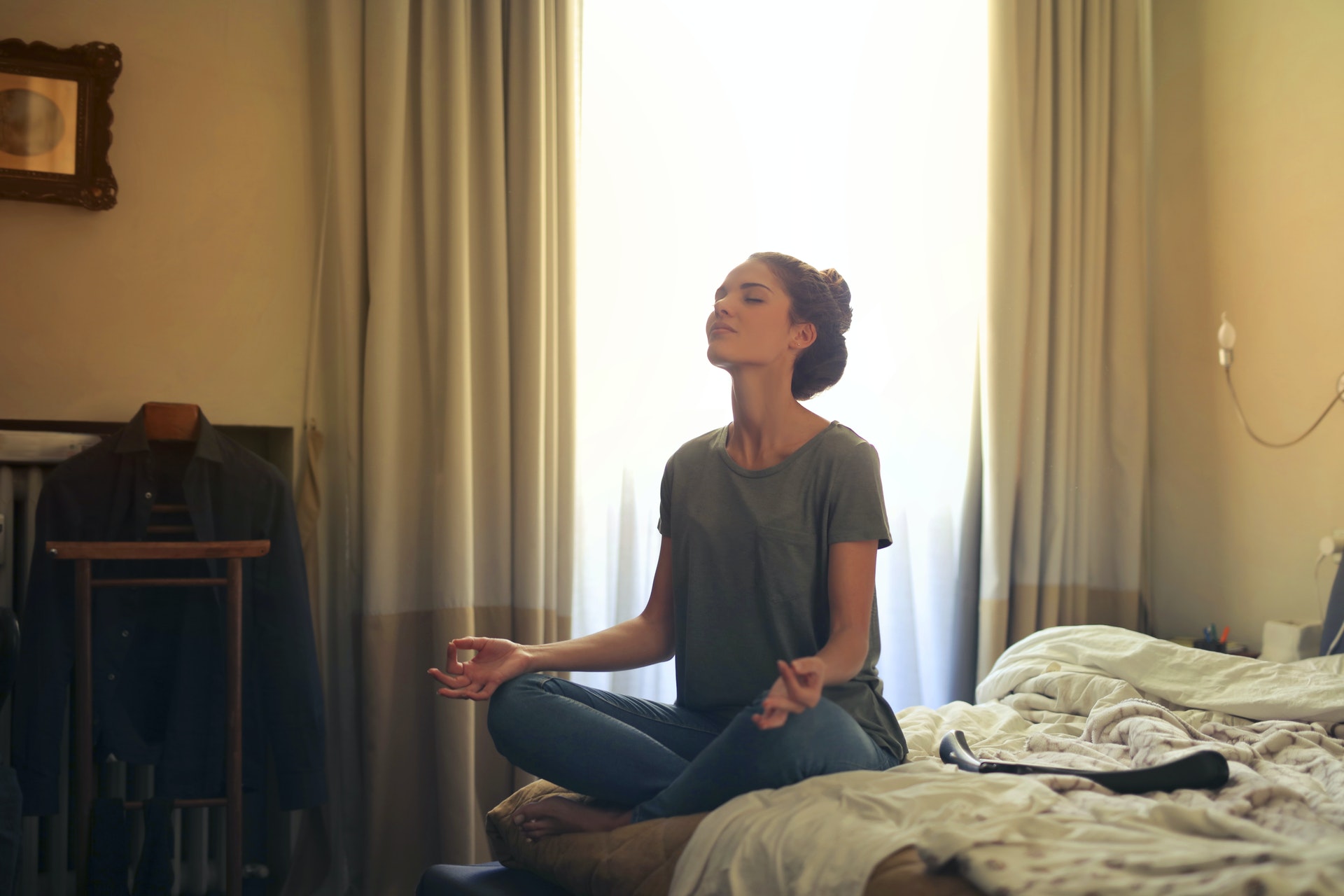
One of the social norms that have constantly plagued the average office worker is the concept of sitting still at the office. As a person who is brimming with excitement for the next big thing or overflowing with spirit for the next explosive adventure, you might not be keen on being seated for hours on end. We all, to a degree, yearn to get going, to get moving, to go around. So, what happens when we're asked to stay put and sit still?
Sitting tightly might just prove to be a very uncomfortable experience. You could find yourself tapping your feet, shaking your knees, and wiggling your toes every few seconds. In this case, your desire for any kind of movement manifests in smaller, continuous bursts of motion.
We feel you.
While you might not be the kind of person who gets giddy over the thought of being physically active 24/7, it's highly likely that you prefer at least some level of physical activity in your daily agendas. That is not uncommon. Perhaps you could even remember yourself thinking—or a friend mentioning—that one of the conditions to describe their dream job was the assurance of having real movements incorporated in everyday work. This could even hold the same relative importance as the consideration of salaries, co-workers, and coaches, among others.
You might be wondering why we have been conditioned to promote good health by incorporating an active lifestyle at work—and no, they are not just hearsays or platitudes touted by mainstream media. It is unmistakably an area that is well-researched and evidenced by the sciences.
Here, we gathered different reasons why you should always, always maintain an active lifestyle:
#1 Physical Activity Reduces Stress
The mental benefits of aerobic exercise have a neurochemical basis. Exercise reduces levels of the body's stress hormones such as adrenaline and cortisol. It also stimulates the production of endorphins—chemicals in the brain which serve as the body's natural 'mood elevators' (Harvard Health Publishing, 2011). The feeling of relaxation and optimism cultivated by physical movement can be credited to the release of endorphins. Even a 20-minute stroll can clear the mind and reduce stress. See, being active actually increases energy and slows the ageing process.
#2 Physical Activity Improves Digestive Health
Regular physical activity has been shown to increase gut motility, bowel movements, and an overall more healthy, diverse gut microbiome (Havranek, 2017). It also decreases the risk of developing colon cancer by up to 50% (Akkermans et al., 2001). Also, for those interested in keeping their body measurements in check, it does allow for maintaining a healthy weight.
#3 Physical Activity Cuts the Risk of Getting Illnesses
According to Harvard Health Publishing (2011), regular physical activity will lower your blood pressure, improve cholesterol, and reduce your blood sugar. This reduces the risk of:
- heart attack
- stroke
- diabetes
- breast cancer
- osteoporosis and fractures
- obesity
- depression
- dementia
#4 Physical Activity Helps Skin Conditions
Our skin is affected by the amount of oxidative stress present in the body (Semeco, 2017). To elaborate, oxidative stress actually occurs when the body's antioxidant defences do not repair the damage that free radicals impose on our cells. This leads to the deterioration of our skin.
Nonetheless, regular moderate exercise can increase the body's production of natural antioxidants, which help protect these cells. Regular exercise also stimulates blood flow which helps delay the appearance of skin ageing.
#5 Physical Activity Reduces Pain
Chronic pain can be hard to manage. Some of these can include chronic lower back pain, fibromyalgia, and chronic soft tissue shoulder disorder. For many years, the standard advice for people afflicted with chronic pain was rest and inactivity; however, recent studies have shown that mild physical activity and movement helps relieve chronic pains, raise pain tolerance, and decrease pain perception to improve quality of life (Semeco, 2017).
Simple Ways to Keep an Active Lifestyle While Working
All this being said, here are three small, doable ways to satisfy your inclination to lead a more active lifestyle while working:
#1: When you can't seem to sit still: Stretch
Stretching keeps the muscles flexible, strong, and healthy—this flexibility is vital to maintain a range of motion in the joints. Otherwise, our muscles will shorten and become tight (Harvard Health Publishing, 2013).
Picture this, if you've been sitting all day, the muscles at the back of your thighs or your hamstrings will tighten. To avoid this, we should stretch regularly and see that we keep our muscles long and lean. It was mentioned in the same article that the areas we should focus on when we stretch are our lower extremities: the calves, hamstrings, hip flexors, and quadriceps. Other than those mentioned, it is also a good idea to stretch the shoulders, neck, and lower back. Exercise physiologist Mike Bracko recommends doing the Standing Cat-Camel as a work-related simple back stretch (Collins, 2012).
#2: When you can't seem to sit still: Stand
Standing up straight brings a myriad of benefits. These include building a stronger core, breathing better, burning more calories, and reducing back pain (Teighnmouth Chiropractic, 2017). One of the best ways to resist the social norm of sitting tightly and refrain from remaining sedentary is the use of standing desks. Standing desks are essentially a game-changer in the office environment. They challenge the traditional notion of jobs solely being done seated. These desks allow users the liberty of working while standing up. The desks can be raised to a comfortable height for the employee—people can easily move from a sitting height to a standing height with a quick and smooth adjustment of an operating hand crank.
If you're worried about constantly having to adjust and readjust your standing desk to what suits your height, fret no longer. There are standing desks that have presets which are programmable. They're exactly what you need, in such a way that the products are tailor-fit to your physical attributes and preferences.
#3: When you can't seem to sit still: Step out
Taking a breather by walking can be one of the things we take for granted. Walking a few steps is relatively easy to do and is easy on the joints. Similar to the first two suggestions, walking has plenty of health benefits such as improved circulation, maximized bone mass, stronger muscles, and better memory.
If you're staying at home and prefer not to leave, you can always consider getting a treadmill to motivate you to get more steps. The Egofit Walker PRO Treadmill is the smallest and lightest under desk treadmill in the world—it is so compact and practically invisible when not in use, making it perfect for exercising at home.
Remember, when you can't sit still, don't. You can always stand, stretch, and step out. Incorporating an active lifestyle at work can aid in reducing stress, improving gut and skin health, minimizing disease risks, and reducing pain.
References
Akkermans, L. et al. (2001, March). Potential benefits and hazards of physical activity and exercise on the gastrointestinal tract. Retrieved from https://www.ncbi.nlm.nih.gov/pmc/articles/PMC1760153/
Collins, S. (2012). The truth about stretching. Retrieved from https://www.webmd.com/fitness-exercise/features/how-to-stretch#1
Harvard Health Publishing (2011, February). Exercising to relax. Retrieved from https://www.health.harvard.edu/staying-healthy/exercising-to-relax#:~:text=Exercise%20reduces%20levels%20of%20the,natural%20painkillers%20and%20mood%20elevators.
Harvard Health Publishing (2013, September). The importance of stretching. Retrieved from https://www.health.harvard.edu/staying-healthy/the-importance-of-stretching
Havranek, R. (2017, September 11). Exercise and Digestive Health. Retrieved from https://russellhavranekmd.com/exercise/#:~:text=Regular%20exercise%20can%20help%20reduce,risk%20of%20diverticular%20disease%20complications.
Semeco, A. (2017, February 10). The top 10 benefits of regular exercise. Retrieved from https://www.healthline.com/nutrition/10-benefits-of-exercise
Teignmouth Chiropractice (2017, July 21). 9 benefits of standing up straight!. Retrieved from http://www.teignmouthchiropractic.com/9-benefits-of-standing-up-straight/





